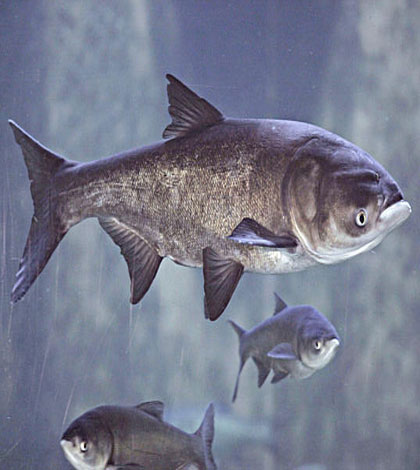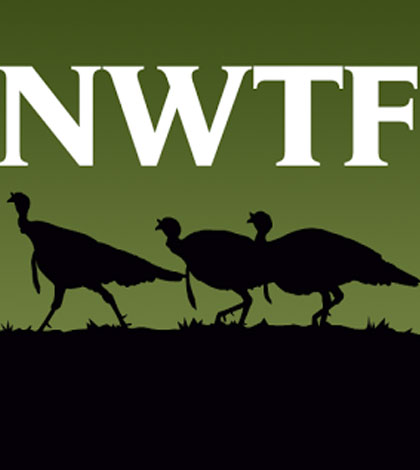ONTARIO—Since DNA for Asian carp has already been found in Lake Michigan, a Great Lakes tributary, a Manitoulin Island resident says the whole business of a Great Lakes and Mississippi River Interbasin Study, looking at alternatives to keep the invading species from the Great Lakes, is a moot point.
“If you google Asian carp, their DNA was found in a shoreline area of Wisconsin and Michigan on November 5, 2013. They have already identified Asian carp in Lake Michigan, so this whole business is moot,” stated Mike Wilton.
“They are estimating it will cost $18.3 billion dollars to provide for sufficient barriers to stop the Asian carp to from entering the Great Lakes,” said Mr. Wilton. “I think this is basically a make work project for the United States Army Corps of Engineers (which released the study).”
“They provide eight options for members of the public to comment on as to what they can be looking at to prevent Asian carp from the Great Lakes. These options range from doing nothing to cutting off both waterways and others that include various dams and floodgates,” said Mr. Wilton. “By the time the comments are registered and the committee is finished talking and wringing their hands on what to do the Asian carp will already be well established in the Great Lakes.”
“The only solution is to cut off the two waterways (Mississippi River and the Great Lakes),” said Mr. Wilton. However, “this is not even a real solution because it is already too late in my opinion. Anyone with half a brain will know this is a plan to get more money for the USACE.”
Geoff Peach, of the Lake Huron Centre for Coastal Conservation, agrees that Asian carp would provide a very serious environmental threat if it makes its way across the Great Lakes. He said there is another fish, the Eurasian ruffe, already in the Great Lakes that is threatening to do what the carp will do, but in reverse. He said the ruffe is threatening to go south through the Chicago Canal and into the Mississippi. The canal is the link between the Mississippi River and the Great Lakes and he agrees, to stop the invasion of invasive species, the Chicago Canal should be closed.
“I looked at the summary of the GLMRIS report and it had what I had expected in terms of multiple recommendations that someone will have to make a decision on: the US congress,” Mr. Peach told the Recorder. “The question is when are bold steps going to be taken to have a permanent barrier set up to end invasive species getting into the Great Lakes or (will Congress ) go with the least expensive alternative ($68 million) that may or may not help?” asked Mr. Peach. “The only way is to have a permanent barrier; the only way to keep (these) invasive (species) where they are. This would in turn preserve the multi-billion dollar commercial fishing industry that could be wiped out.” He noted that by closing the two waterways, there would also be a slight increase in water levels.
Mary Muter, chair of the Great Lakes Section of the Sierra Club Ontario, agrees that “the permanent physical barriers with hydrological separation of the waterways is the only way to go and (that the barriers) would raise the levels of the water a bit as well as keep out the Asian carp and other invasive fish.”
“I’ve read the summary and risk assessment and appendices in the study and one of the things that is disappointing is that they only provided alternatives, they (USACE) made no recommendation at all,” said Ms. Muter.
“The permanent physical barrier seems to be the solution,” said Ms. Muter. “Another huge red flag that came out of the study is that they (USACE) are holding six public meetings, none in Canada, to get input. This issue has a potentially huge impact on Canadian interests and I find this really disappointing. It was our Canadian research department that demonstrated that Asian carp were in and reproducing in the Great Lakes. I will be contacting Tony Clement as to why we aren’t able to provide for a public hearing in Canada.”
The GLMRIS report presents the results of a multi-year study regarding the range of options and technologies available to prevent the movement of aquatic nuisance species (ANS) between the Great Lakes and Mississippi River basins through aquatic connections.
The alternatives presented in the report include continuing current efforts (ie the electric barriers) with “no federal action-sustained activities; non-structural control technologies (ie education, monitoring, herbicides, ballast water management); a technology concept involving a specialized lock, lock channel, electric barriers and ANS treatment plants at two mid-system locations in the CAWS; a technology concept (CAWS buffer zone) using the same technologies as the third option preventing downstream passage form Lake Michigan at five points and preventing upstream passage at a single point at Brandon Road lock and dam; lakefront hydrologic separation with physical barriers separating the basins at four locations along the lakefront of Lake Michigan; mid-system hydrologic separation with physical barriers separating the basins at two mid-system locations; a hybrid of technology and physical barriers at four mid-system locations, leaving the Cal-Sag channel open; a hybrid of technology and physical barriers at four mid-system locations, leaving the Chicago sanitary and ship canal open.
It would cost $18.3, billion to slam shut the lakes entryways against Asian carp, now just a few kilometres from Lake Michigan, says the detailed study of options and costs. The cheapest of eight options would cost $68 million, the USACE said. The most effective choices, says the report, include separating Lake Michigan from its troublesome tributaries. The costs for those options ranges from a low of $8 billion to more than double that.
Government officials on both sides of the Canada-US boarder have said the invasion threat is too high and too imminent to waste time on half measures.





